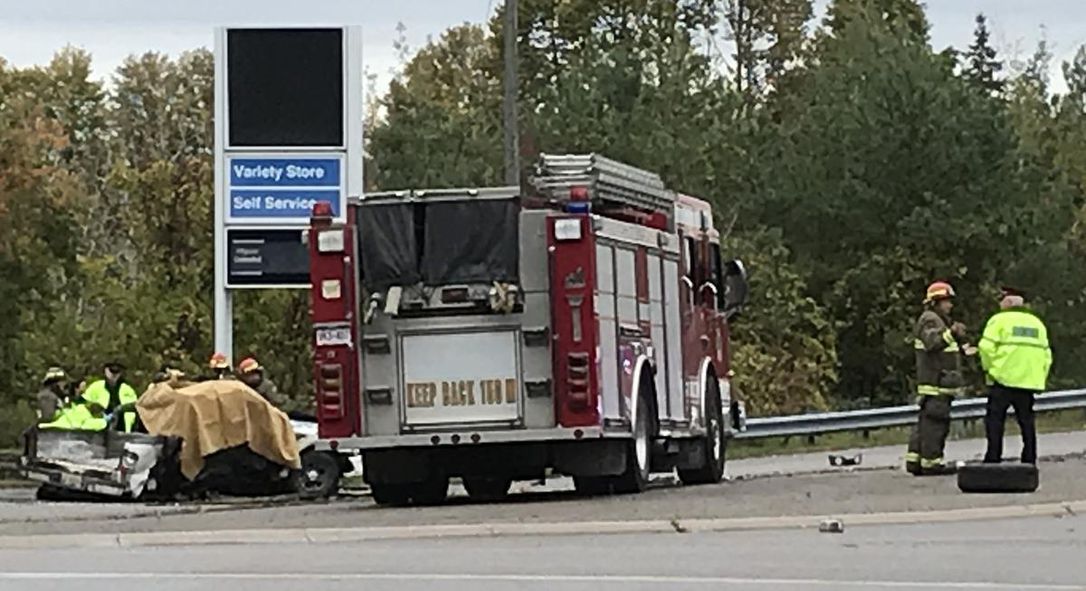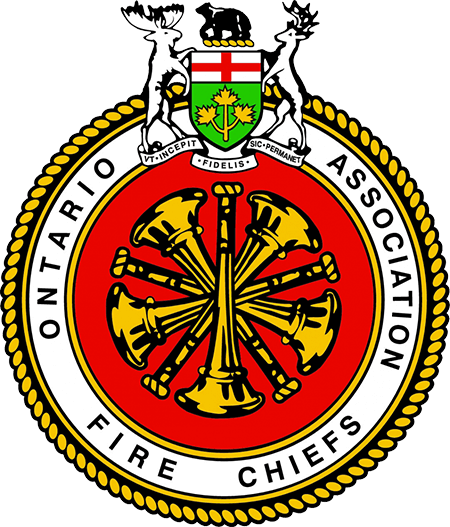
As Scugog fire trucks raced south of Port Perry, responding to a two-vehicle collision on a recent early Thursday morning, the firefighters on board were as much preparing mentally for an awful scene as they were strategizing their plan for helping victims.
“We knew it was an 80 km/h zone, we knew it was a head-on or a side collision. We knew it was going to have the potential (for emotional trauma),” said Scugog fire chief Mark Berney, summarizing the thoughts of his firefighters that responded to an Oct. 3 collision on Simcoe Street that left two men dead and one woman critically injured.
“You know when you’re responding to (a motor vehicle accident) with 80-kilometre-plus speeds, your mind is already starting to work that it’s going to be a heavy-impact type of incident.”
An update en route about the seriousness of the collision “raised the level of awareness of the (firefighters),” which added “fuel to the fire, emotionally,” Berney said.
At the scene, firefighters worked to douse a pickup truck that had spun off the roadway after colliding with a sedan and burst into flames. The driver of that vehicle died in the vehicle, burnt to the point where police say blood and dental records are needed to positively identify the victim.
A few steps away, the body of a 71-year-old man lay covered in a tarp on the roadway. He was a passenger in the southbound sedan and was pulled from the vehicle by police officers and a passerby who attempted to save his life. He was pronounced dead at the scene.
As the firefighters carried out their duties, “preventive” measures were taken to try and ensure that firefighters only “see what needs to be seen” in a bid to reduce emotional trauma, said the fire chief.
It was a “horrific” scene, said Berney.
As first responders charged with keeping the community safe, responding to fires, accidents and other types of trauma, firefighters can see some of the worst things imaginable — death, destruction, heartache. It’s a career where you can’t leave your work at the office when going home at night.
It’s important, stressed the Scugog fire chief, that firefighters talk about what they’ve seen and experienced. How they feel and what they’re thinking.
“As firefighters, we’re always looked at as the brawn of a brains-and-brawn operation,” said Berney of the typical firefighter stereotype.
But mental health awareness and care has become a front-burner issue for fire departments, particularly over the last few years.
“It just really hit us in late 2015, 2016 that we’re not doing a good job as fire services in general in preparing firefighters for incidents with emotional trauma,” said Berney, who as the vice-president of the Ontario Association of Fire Chiefs has spearheaded work on the mental health for firefighters file over the past three years.
With the development of resilience training, firefighters have been encouraged to share their thoughts and step forward when dealing with mental health challenges.
“Over and above suffering from operational stress injuries is developing that personal willingness to raise your hand as if you have a sprained ankle and say that, ‘I’m just not in a good state today and I need help,’ ” said Berney.
After every single call Scugog firefighters attend, he continued, there is a debriefing session at the fire halls. Firefighters review their actions as a team, confirm they made the right choices and stomp out any doubt that the end result could have been different.
As well, and perhaps most importantly, said Berney, the session allows the firefighters to air out their thoughts about what they saw at the scene.
“The biggest thing we can do to help ourselves .. . is to talk about it,” he said, stressing that “unpacking the call” is a huge part of ensuring good mental health.
“You need to unpack it before sleeping. If you don’t unpack it, you embed it,” said Berney, noting that tucked-away emotional trauma “compounds.”
Scugog firefighters can seek help through the township’s employee assistance program as well as their benefits. There is also peer support, with the fire chief keeping an eye on his officers who, in turn, look for struggles among the firefighters.
“We use the chain of command to stay on top of the people who work for you and with you,” he said.
As well as debriefing, firefighters are encouraged to lightly exercise — go for a walk or bike ride — to help clear their minds, do mindfulness activities such as crossword puzzles or participate in a hobby as a way to distract themselves. A massage also works wonders, said Berney.
Sometimes, continued the fire chief, it’s recommended that firefighters “shut down, take a bit of a break,” although he admits that may be a hard task for first responders.
“Our systems are always on high alert, that is a reality,” said Berney. “You’re always on alert as a volunteer (firefighter), you’re waiting for that pager that is always turned on. As a first responder, your brain’s active all the time.”
Scugog’s fire chief is a big advocate for mental health awareness and care and he talks openly about past traumatic experiences in his career that still haunt him to this day.
He uses his position with the OAFC to encourage dialogue and break down the stigma about mental health. Berney is also working through the OAFC to help develop a program for fire services that focuses on preparing firefighters for emotional trauma incidents instead of reacting to them.
It’s hoped, he said, that a uniform mental health strategy can be created for fire departments across the province that may lead to provincial funding down the road.
“It’s been fulfilling, both personally and professionally,” Berney said, of his work with the OAFC.
That work’s important, continued the fire chief, because “the cost of less-than-healthy employees from a mental health perspective is billions of dollars annually.”
He estimated that a $1 investment in mental health programs could net businesses and organizations a $2 return from their employees.
“As employers and employees we all have to work toward a better workplace,” said Berney. “The investment in mental health is as important as having a gym (in the fire hall for firefighter training).”
The Durham Regional Police Service has also made mental health care a top priority for its officers.
Debriefing sessions are held after “major events” and officers are asked if they require any additional support, said Dave Selby, a spokesman for the Durham force. There are a “wide variety” of internal services and supports for cops as well as confidential programs officers have access to, added Selby.
There is also a “very robust” employee assistance plan at Durham police service, he said.
“We’ve done a lot of work over the years to reduce the stigma (around mental health) and help any employee who struggles,” said Selby.
“There’s probably a lot more awareness of the impact of stress on front line responders as a serious issue than there was 20 or 30 years ago,” he added.
As well, added Selby, officers are urged to check on each other and reach out to their peers following a traumatic event.
“We encourage those shoulder-to-shoulder to keep an eye on each other,” he said, adding officers’ families and “platoon family” are usually among the first people to recognize change in those under mental health stress.
“Somebody in those two groups should notice if something’s wrong.”
Link to original article on The Star: How Scugog firefighters deal with the job’s emotional trauma
